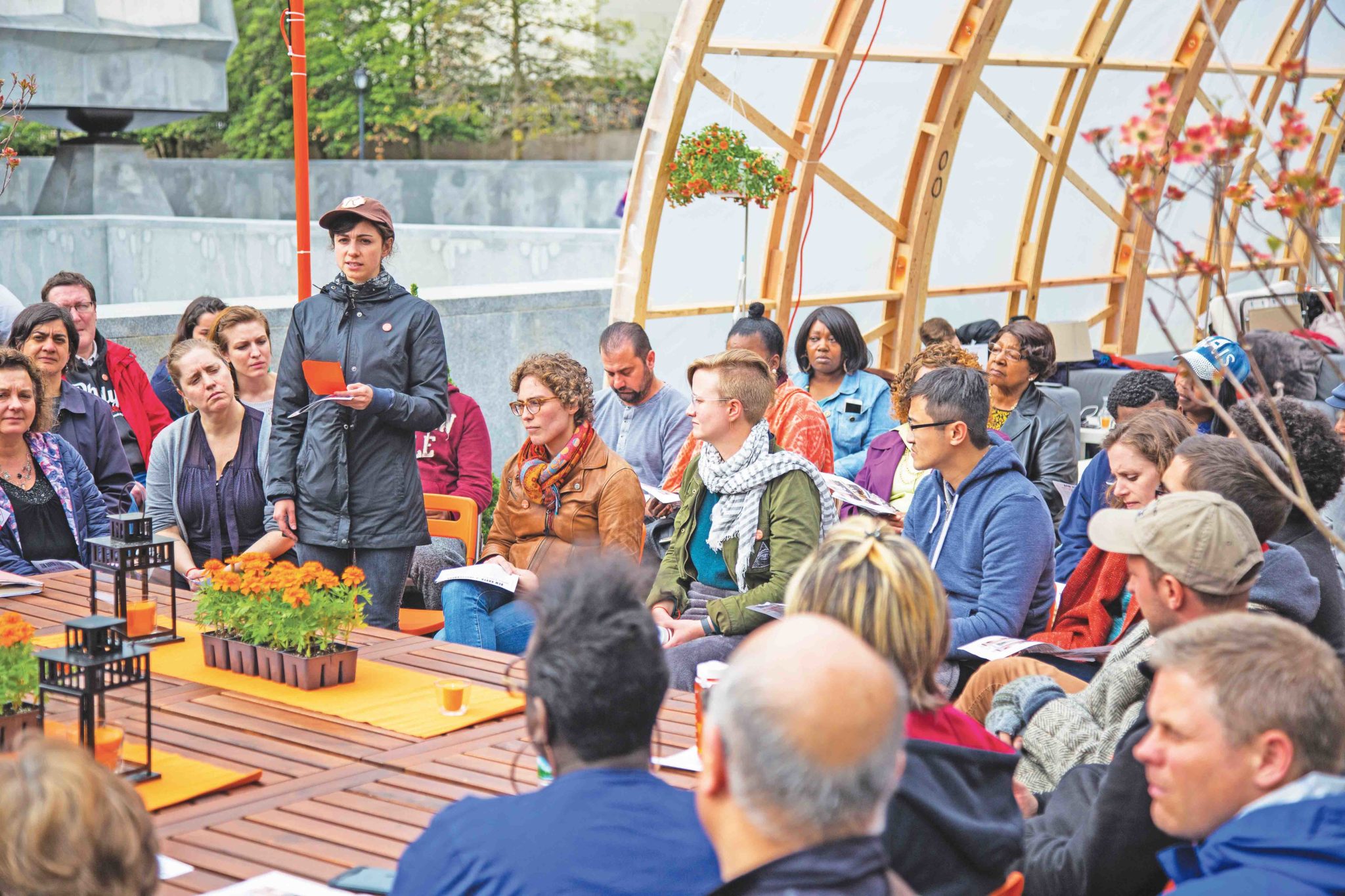
A piecemeal election strategy that led to a monthslong court fight. A protest march designed to coincide with Yale’s annual commencement ceremony. A hunger strike on Beinecke Plaza.
In the year and a half since the National Labor Relations Board, in a case involving Columbia University, gave graduate students at private universities the right to unionize Local 33 has tried everything to push Yale to the negotiating table.
But on Monday, after more than a year and a half of concerted campaigning, the union took a major step backward, withdrawing its petitions to the National Labor Relations Board and effectively admitting defeat in its push to represent graduate students who voted to unionize in February.
All of which raises the question: If the sight of eight graduate students starving themselves outside Woodbridge Hall wasn’t enough to force labor negotiations with Yale, will the University’s graduate students ever get their union?
The history of graduate student unionization at Yale stretches back decades. In 1995, more than 300 graduate students affiliated with the Graduate Employees Students Organization — the precursor to Local 33 — walked away from their jobs as teaching assistants, withholding undergraduates’ grades in hopes of pressuring Yale to the negotiating table. But time and again, the University has stood its ground, as a shifting legal landscape has left graduate students’ unionization prospects uncertain. Monday’s news was just the latest episode in a long history of setbacks for the graduate student labor movement at Yale.
The seeds of Local 33’s defeat were sown in November 2016, when Donald Trump won the presidential election, Now, with the NLRB dominated by Trump’s conservative-leaning appointees, Local 33 and other unrecognized unions at private universities across the country are likely to lose the right to unionize, said former labor board Chairman William Gould, as the NLRB rolls back Obama-era rulings. In short, the union’s prospects look bleak.
“They don’t have any way of sharing the decision-making related to their working conditions without collective bargaining,” Gould said. “Without the opportunity to have collective bargaining, they would have to abide by the unilateral decision-making of Yale.”
Local 33 co-Presidents Robin Dawson GRD ’19 and Lena Erkert-Erdheim GRD ’20 sent an email to the Local 33 community Tuesday afternoon calling the petition withdrawal the best path forward for graduate students at Yale, given the current legal landscape.
“As you may have heard, we have withdrawn our petitions with the National Labor Relations Board,” the email read. “What this means, concretely, is that we no longer wish to have the NLRB exercise jurisdiction over the petitions.”
Local 33 took the step back to “protect both [the union’s] rights and the rights of thousands of other workers across the country,” the email continued.
Local 33 sympathizer Aritra Ghosh GRD ’23 described the union’s reasoning as solid, saying he doubts Yale would agree to negotiate with the union even if the NLRB rejected the University’s appeals.
But in the last few days, the union’s leadership has remained silent on its plans, ignoring repeated requests for comment from the News and drawing criticism from rank-and-file members who say the decision to withdraw the petitions was undemocratic. Dan Bowling, a labor expert at the Duke University School of Law, said the fact that the board may walk back its decision to grant graduate students the right to unionize does not justify withdrawing petitions.
“Local 33 took on a responsibility to represent graduate students who supported them,” Bowling said. “To withdraw now, before there is resolution of the Columbia case, is surprising and disappointing. There is no guarantee that the new NLRB will rule against graduate student unions, although I think it is more likely than not.”
Breaking from union-organizing traditions at other universities, in 2016, Local 33 adopted a so-called “micro-unit” election strategy, seeking unionization votes in 10 academic departments and ultimately winning elections in eight of them.
The strategy has proven controversial among union supporters and University officials, who have long opposed graduate student unionization on the grounds that it will negatively affect the student–professor dynamic.
Charles “Chip” Long, a former University deputy provost, said Local 33’s piecemeal strategy was “contrived” and revealed that the union did not believe it had the support of a majority of the graduate student body.
“It always struck me as contradictory — I mean, what does a union mean but ‘being together’?” Long said.
The departmental elections were not the first time Yale’s graduate student union has drawn criticism for its tactics. Over the years, students have characterized the union’s recruitment strategies as overly aggressive.
Long-time unionization critic Matthew Glassman GRD ’06 cited sympathy strikes that Local 33, then known as the Graduate Employees and Students Organization, held in the 2000s alongside Locals 34 and 35 — Yale’s service, maintenance, clerical and technical unions — as examples of the union’s “very confrontational” approach.
Last December, 80 students affiliated with Local 33 signed an online petition expressing distrust with the union’s leadership and announcing the formation of a new group called the Union We Want.
In a statement to the News on Tuesday, the Union We Want’s ad hoc communications committee called for Local 33 to have “a frank, open, union-wide discussion about our strategy and prospects, so that members can collectively decide how to build a powerful union — and where to go with it,”
Longtime Local 33 Chairman Aaron Greenberg GRD ’18 left his position at the union late last year.
Jingyi Cui | jingyi.cui@yale.edu







